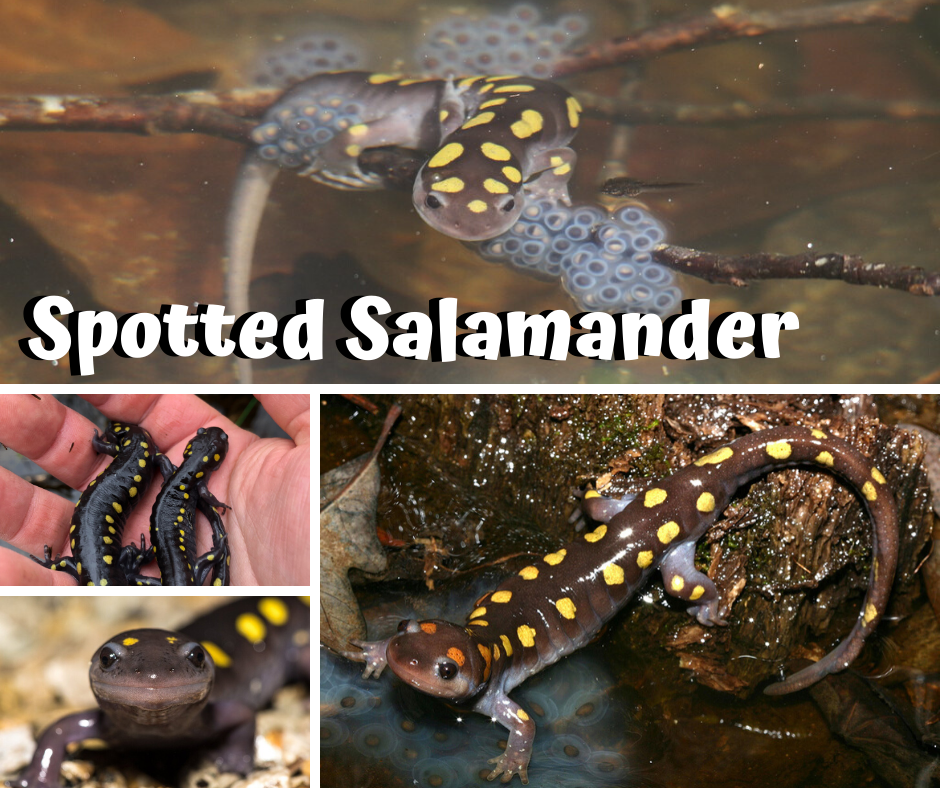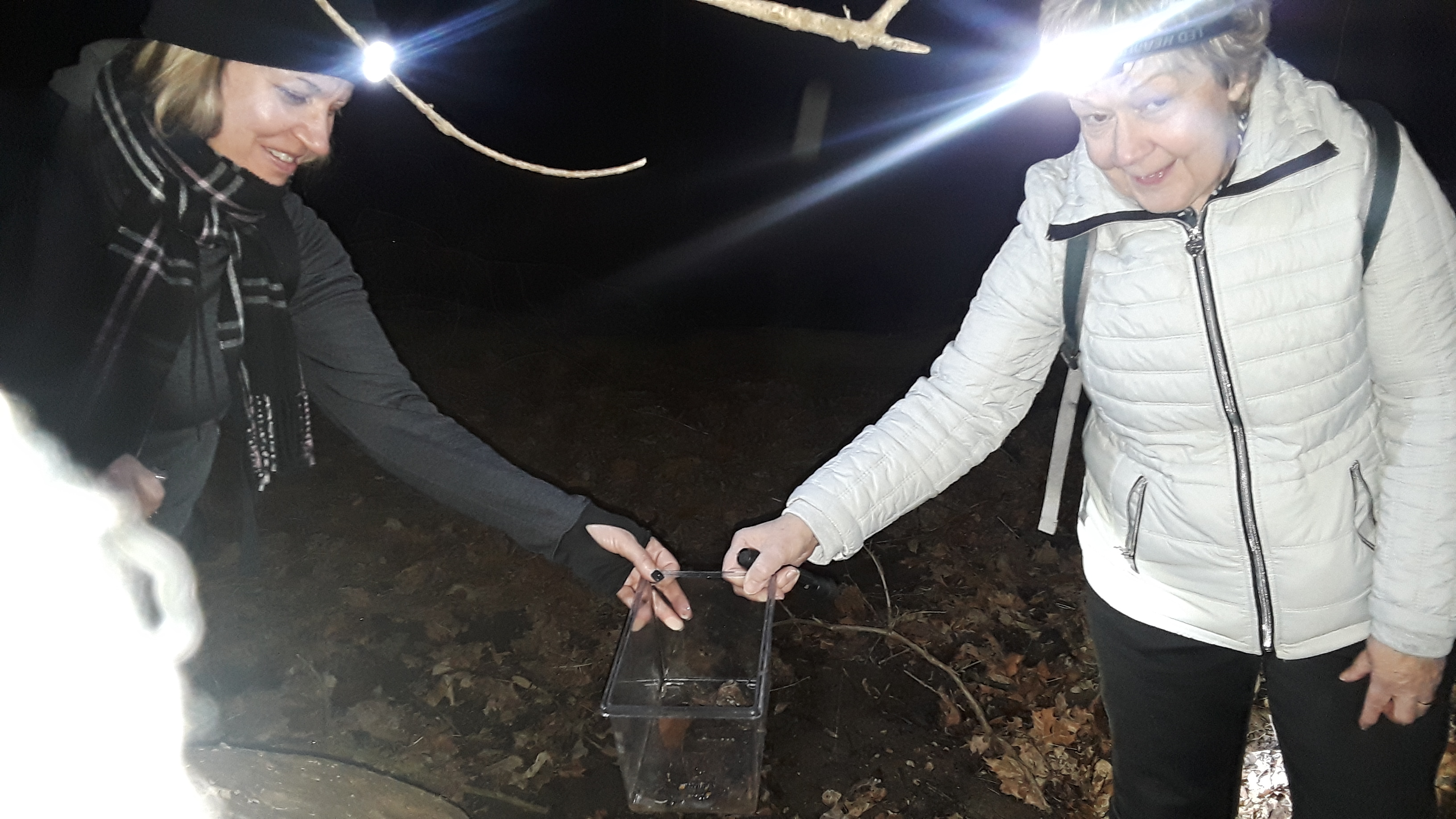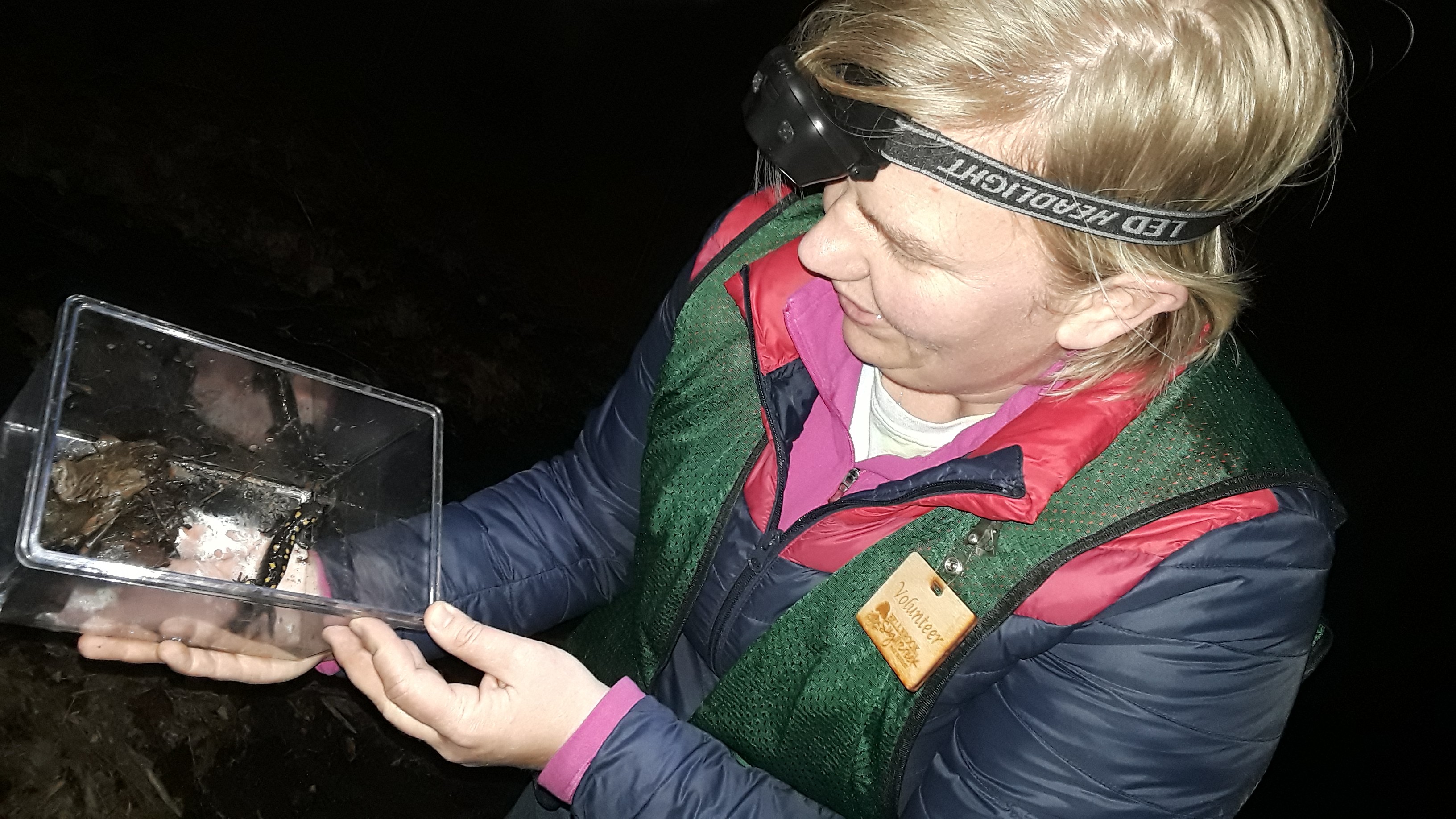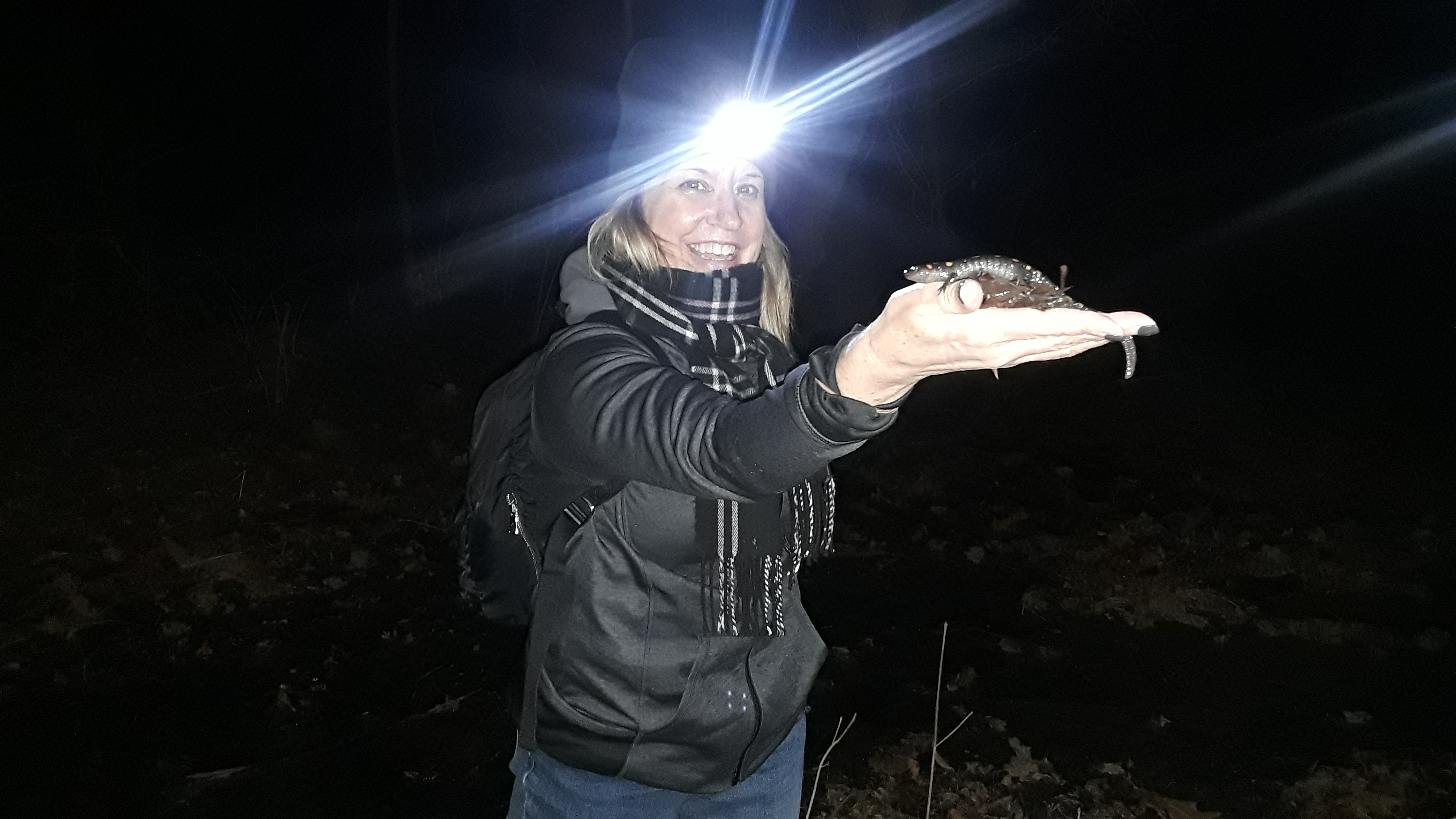Spotted Salamander
By: Heather Ficke
Take a peek into the world of an impressive critter who may be living in your backyard right now, but you may never know it! Our state amphibian, the Spotted Salamander, is a member of the mole salamander group. Their wide, rounded snout give them the acute ability to dig in the soil, just like moles! These impressive creatures spend most of their lives underground, coming out at night to feed and in the springtime to mate. Their favorite foods include crickets, worms, insects, spiders and slugs.

These “little” guys are not as little as you’d think, typically growing to be between 6-7 ½ inches long. Their stout, dark-colored bodies feature two rows of bright yellow spots running down their backs. Research has shown that no two spotted salamanders have the exact same dots! Why are they so brightly colored when blending in would protect them so much better? One of the spotted salamander’s best defenses is the presence of poison glands on their neck and back that release a toxic, milky liquid when they are disturbed. Those yellow spots are a warning to potential predators that the salamanders are potentially deadly. “Go ahead,” they say. “Eat me, I dare you!”
Check out this video from the Ohio Department of Natural Resources Division of Wildlife
But that’s not all! These amazing amphibians are also able to regenerate lost limbs if attacked by a predator. It takes an enormous amount of energy to regrow toes, a leg or a tail, but it can be done! The regenerated part may be slightly different in size, strength or color from the original, but it will remain functional for the life of the salamander. This combination of defenses pays off, as they are known to routinely live to be over 20 years old in the wild!
Like other salamanders in our area, they depend on seasonal (or vernal) pools which are wet for a good portion of the year, but will dry up eventually. This makes it the perfect place for amphibians to lay their eggs, due to the fact that fish cannot live there. On just the right night, after the last snow falls and the first warm rain of spring arrives, the spotted salamanders make a “run” to their breeding pool. Sometimes hundreds can be seen doing so at once. They have even been spotted at our very own Sweet Arrow Reserve - check out our resident “sallys” who were paid a visit by some of our volunteers as a special thanks for all of their hard work!



Would you like an opportunity to participate in our next Spotted Salamander hike? Volunteer with us!
Interested in learning more about the Spotted Salamander? Check out some of these sites:
https://kids.nationalgeographic.com/animals/amphibians/spotted-salamander/
http://wildlife.ohiodnr.gov/species-and-habitats/species-guide-index/amphibians/spotted-salamander
https://www.nationalgeographic.com/animals/amphibians/s/spotted-salamander/
To see more interesting features on our native creatures, follow us on social media!
